A framing nail gun is one of the most essential tools to have in your home improvement toolbox. You can use it to drive nails into thick material, a task that plays a part in many home building projects.
There are different types of nail guns to choose from, and understanding the contrasting features will make your decision much easier. One attribute that’s often confusing is the framing nailer angle. It’s also one feature that makes this nail gun very different from any other.
In this article, I will break down this misleading feature and enlighten you as to the importance of choosing the best framing nailer angle for the job at hand.
You’ll learn what the term means, why there are different angles, and the pros and cons of each one.
What Do Framing Nailer Angles Mean?
When it comes to framing nailers, there are several variants to choose from, which can be confusing, especially for the beginner.
There’s cordless vs. pneumatic, paper vs. plastic, stick vs. coil, and clipped head nails vs. round head nails. However, one of the most critical is the framing nail gun degree or angle.
The angle of a framing nail gun refers to the collation of the nails. In other words, it’s how they are held together in the magazine. It’s also the angle at which they are slanted.
It has nothing to do with the angle at which the gun fires nails into your workpiece. All nail guns drive nails perpendicularly or straight into the material.
There are several angles, each with its own set of pros and cons. The different types include:
- 15-degree
- 21-degree
- 28-degree
- 30-34 degree
To accommodate the different angles, the features of the nail gun are typically different. For example, 15-degree nailers use coil collated nails. These nails are connected using two thin wire strips.
The nails used in a 21-degree framing nail gun are connected using a plastic strip. Nails for a 30-34-degree framing nailer are held together using paper.
Watch this video if you’d like to see the process of making coil collated nails.
The nails used in each different angled framing nail gun are also dissimilar. 21-degree framing nailers don’t use coil collated nails, whereas a 15-degree gun does.
Something else that changes depending on the angle is the magazine’s length and the number of nails it can hold.
Why Do Framing Nailers Come in Different Angles?
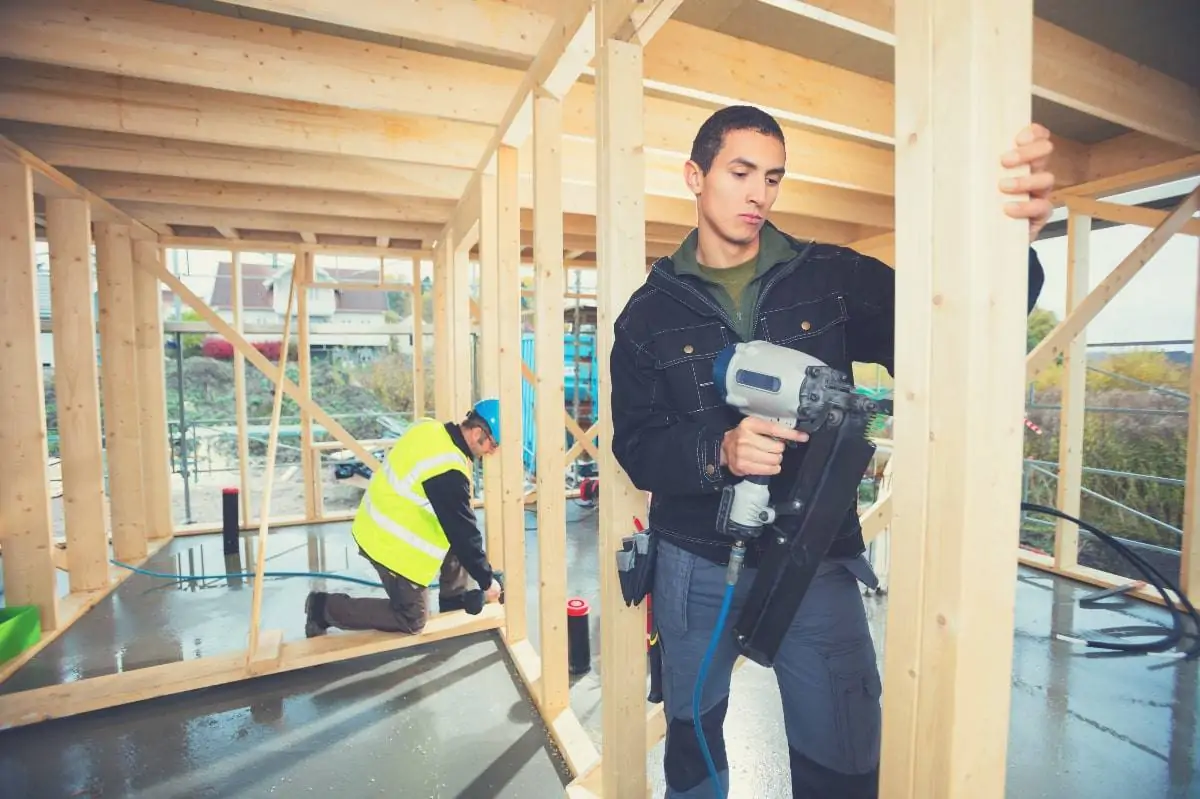
In general, different angles are an option because of the variety of tasks you can use a framing nailer for.
Some angles are better when space is tight. For example, the higher the angle, the easier it is to use this type of gun at difficult angles and in more closed spaces.
It’s also worth pointing out that you’re not allowed to use certain types of nails in some locations. In some parts of the US, you have to use specific nail head types or framing nail collations to pass building code regulations.
The weather has a lot to do with these requirements. Where there are more dramatic weather conditions, such as hurricanes, a nail with greater pull-through resistance would be a requirement. You can check requirements in your area by contacting your building regulations department.
Pros and Cons of Different Framing Nailer Angles
A framing nailer is a very versatile power tool to have in your toolbox. That being said, the usefulness of this tool depends on the nailer angle you’ve chosen. Each has its own set of advantages and disadvantages.
15-Degree Framing Nailers
A 15-degree framing nail gun uses coil style magazines. The framing nails are attached using two thin wire strips. They are tilted at a 15-degree angle. Most commonly, framing nailers of this type are used on roofing projects. You can also use them for floor hoists and in tight corners.
You have to use a specific nail with a 15-degree nail gun. Wire-welded, full-round head framing nails are the only ones that will fit. This type of magazine can hold between 200 and 300 nails, which means less stoppage to reload.
They are not the most popular framing nailer amongst construction workers and professionals because they are cumbersome.
Pros
- Versatile: It’s suitable for working in tight corners.
- Less downtime: The large number of nails means fewer reloads.
- All-weather: Humid climates don’t damage the wire coils.
Cons
- Heavy: The fasteners’ added weight makes working for long periods a challenge and could lead to musculoskeletal disorders.
21-Degree Framing Nailers
21-degree framing nailers use nails held together with a strip made of plastic. The framing nails in the strip are at 21-degree angles. This is the most common framing nailer you can find, and you see it in use on heavyweight construction projects. Other uses include framing, siding, decking, and building projects like dog houses.
I decided to average this degree variation, but should point out that this type tends to range between 20- and 22-degrees. It depends on the individual manufacturer.
For this framing nailer, you’ll need nails with a full-round head. Such fasteners provide maximum strength of hold when you use them to attach two pieces of timber. You’ll find this type of framing nailer meets building code regulations in many United States areas.
The number of nails in a clip ranges from 60 to 70. The downside of such a small number is that you need to keep stopping to reload. The plastic strip also breaks, expelling small pieces of plastic, which can be potentially dangerous. Eye protection is critical.
Pros
- Excellent holding strength: When you use full-round head fasteners, you can expect the greatest holding strength.
- Complies with building regulations: The fasteners used are recommended in many US states.
- Commonly used: Finding this variant and associated accessories will be easier.
Cons
- Frequent reloading: This affects your productivity.
- Safety issues: Plastic pieces are liable to fly out and could potentially cause injuries
28-Degree Framing Nailers
The nails in a 28-degree framing nailer are attached using wire, just like a 15-degree nailer. In the strip, the framing nails line up at a 28-degree angle. The considerable benefit of this configuration is that it’s much more flexible when working in tight spaces.
A nail gun of this type can use three different types of nails: clipped head, offset, and full-round head nails. Such flexibility means the gun uses a smaller magazine, and the tool is more compact. Around 100 nails are in each clip.
Another unique feature of this gun is the fact that it can accommodate double the number of nails. The reason is that the nails huddle close together, and their heads overlay each other.
Such features increase the weight of this tool, which can make working for long periods uncomfortable. Complying with building regulations can also be an issue if you’re using offset or clipped head nails.
Pros
- Flexibility: You can use a range of nails in this type of framing nailer.
- Clean work surface: There is no plastic strip holding the fasteners together, which means a cleaner workspace.
- Compact tool: The smaller magazine means the tool is smaller than other versions.
Cons
- It doesn’t meet building regulations: Clipped head and nails that are offset don’t meet building regulations in many areas.
30- to 34-Degree Framing Nailers
If you want a compact framing nailer, this variation should be more agreeable. A 30 degree framing nailer is one of the most compact framing nailers available. The nails are at the steepest of angles, which means you’ll be able to use the gun in the tightest of spaces.
You can use this nailer for a range of different applications. Siding, fencing, decking, framing, driving large nails into hard lumber, and various other woodworking tasks, including cabinet and furniture applications, are the most common.
Original models were able to accommodate nails with a full-round head. More modern models, however, can now use round head and clipped nails. Paper is used to hold the nails in the magazine together. On average, it holds two strips of as many as 80 nails.
The type of collation means that this nail gun is on the heavy side, making it tiring to use for extended periods.
Pros
- Accessibility: The steep angle allows you to access awkward spaces.
- Clean workspace: There is no plastic debris to clean up.
- Usability: You can undertake a wide range of projects.
Cons
- Cumbersome: The type of collation can make it painful to use.
Framing Nailer Angle Frequently Asked Questions
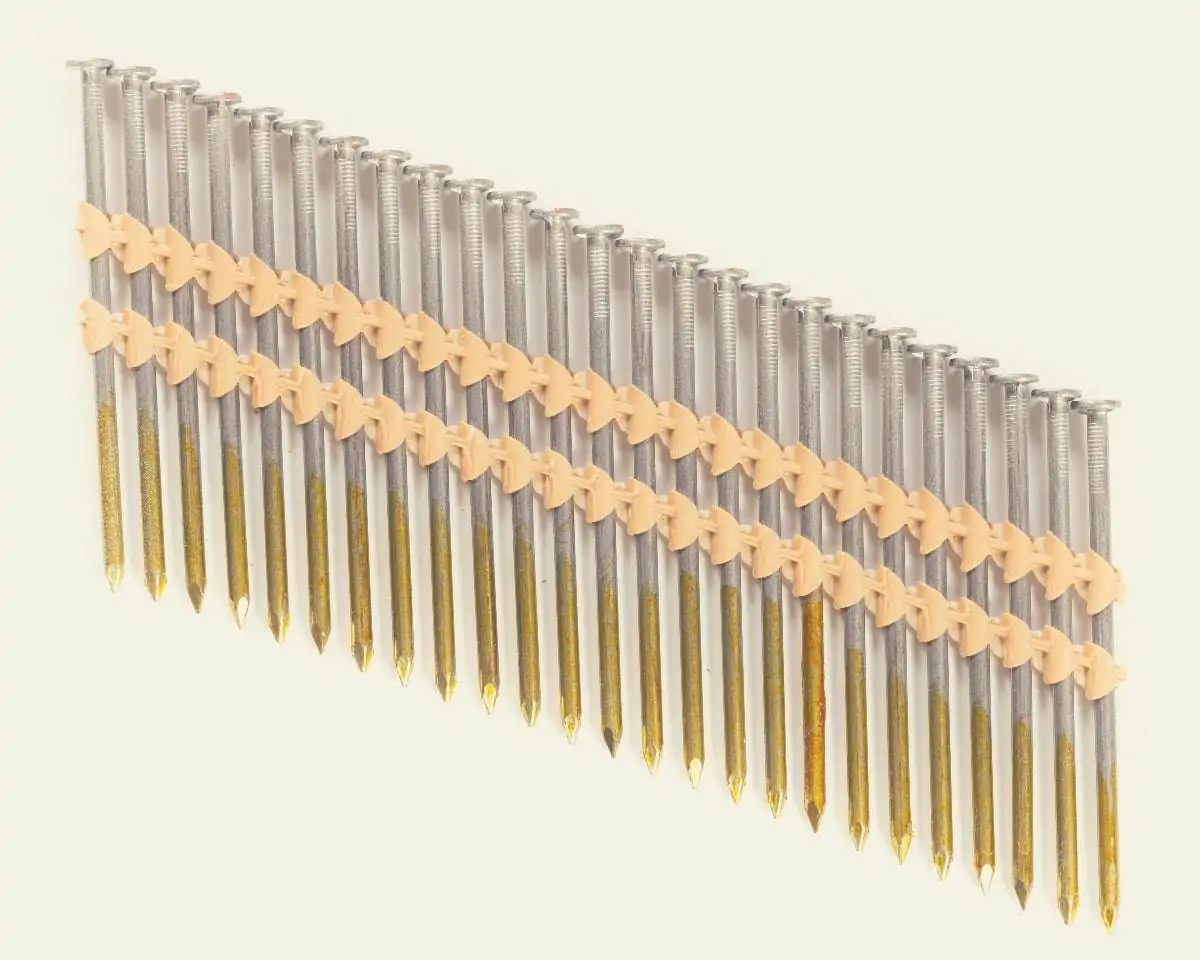
If you’re still unsure about the meaning of the framing nailer angle, the following questions and answers should clear things up for you.
What is the Best Angle for a Framing Nailer?
This is a difficult one to answer because it depends on your needs. The most commonly used is a 21-degree framing nailer, but if you want to drive nails in tight corners, you can use a 28- or even a 30-degree nailer.
If, on the other hand, you need a nailer specifically for roofing, you should be happy using a 15-degree gun as it is more flexible.
For more lightweight applications, such as fastening a staircase or moldings or making furniture, a different type of nailer would better suit the task. A finish nailer, or a brad nailer, might be more appropriate.
Let’s not forget you have to take into account various building codes. Check with your building regulations department for specific information.
What’s Better, a 21- or 30-Degree Framing Nailer?
Each of these nail guns has pros and cons. If, for example, you want to use a nail gun for fixing in confined spaces, you’ll be less limited if you use a gun with a steeper angle, as in a 30-degree nailer.
However, a 30-degree nailer is less likely to meet build regs in your area, so a 21-degree nailer is more versatile.
Which degree is better also comes down to personal preference and fastener availability. A 21-degree nailer is more common, and so you’re more likely to be able to buy one, and it’s associated accessories.
Can You Use 28-Degree Nails in a 21-Degree Nailer?
It’s always better to use the correct nails in your framing nailer. All that aside, you can use 28-degree nails in your 21-degree nailer, but be prepared for the magazine to wear faster. This will happen because 28-degree nails are held with wire, whereas a 21-degree framing nailer uses a plastic strip.
Summing it Up
Now you’ve got all the relevant facts, you shouldn’t find framing nailer angles so confusing. Which one is best for you depends on your preferences, what you’re going to use it for, and what type will be best for you to work with.
The basic structure of all framing nailers is the same. They are for driving fasteners straight through a workpiece. Framing nailer angles don’t make a huge difference.
If you’re in the market for a framing nailer, check out the guide we made on the best framing nailers to find the right one for you.
I’d love to hear your thoughts on the subject, and if you’ve got something to add, please leave a comment below.
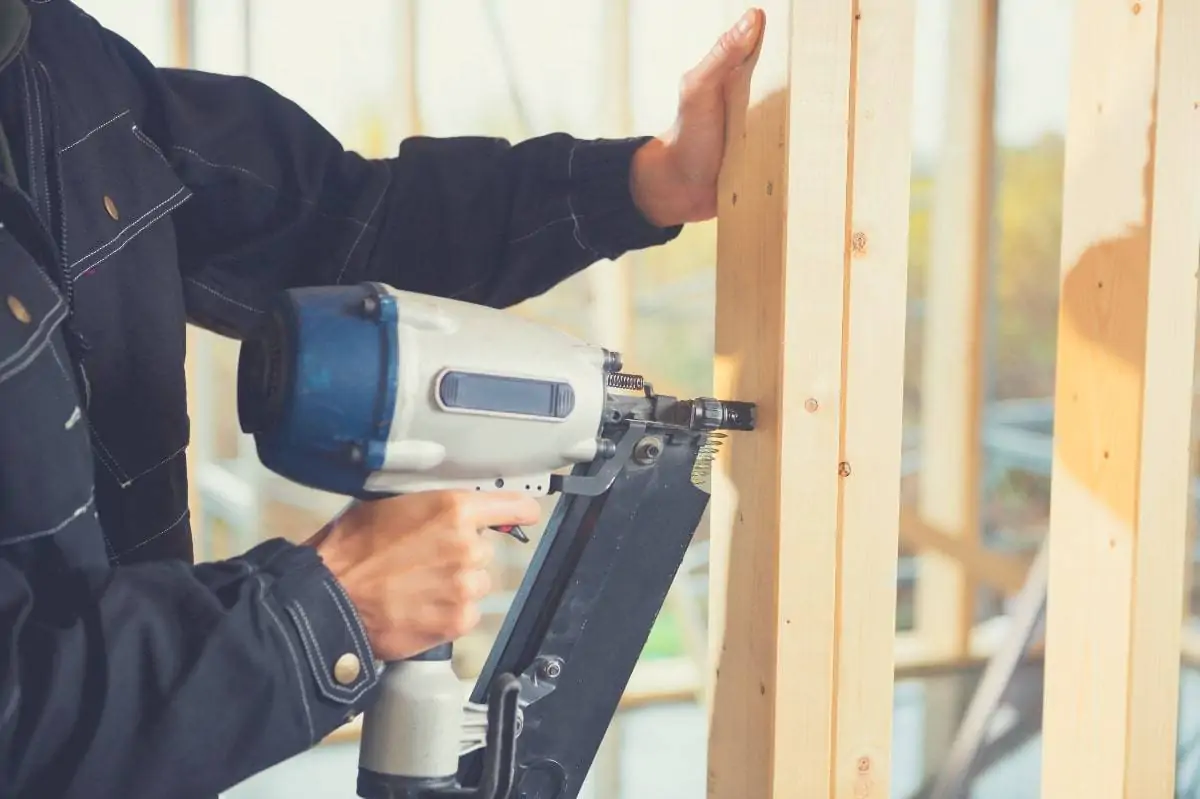
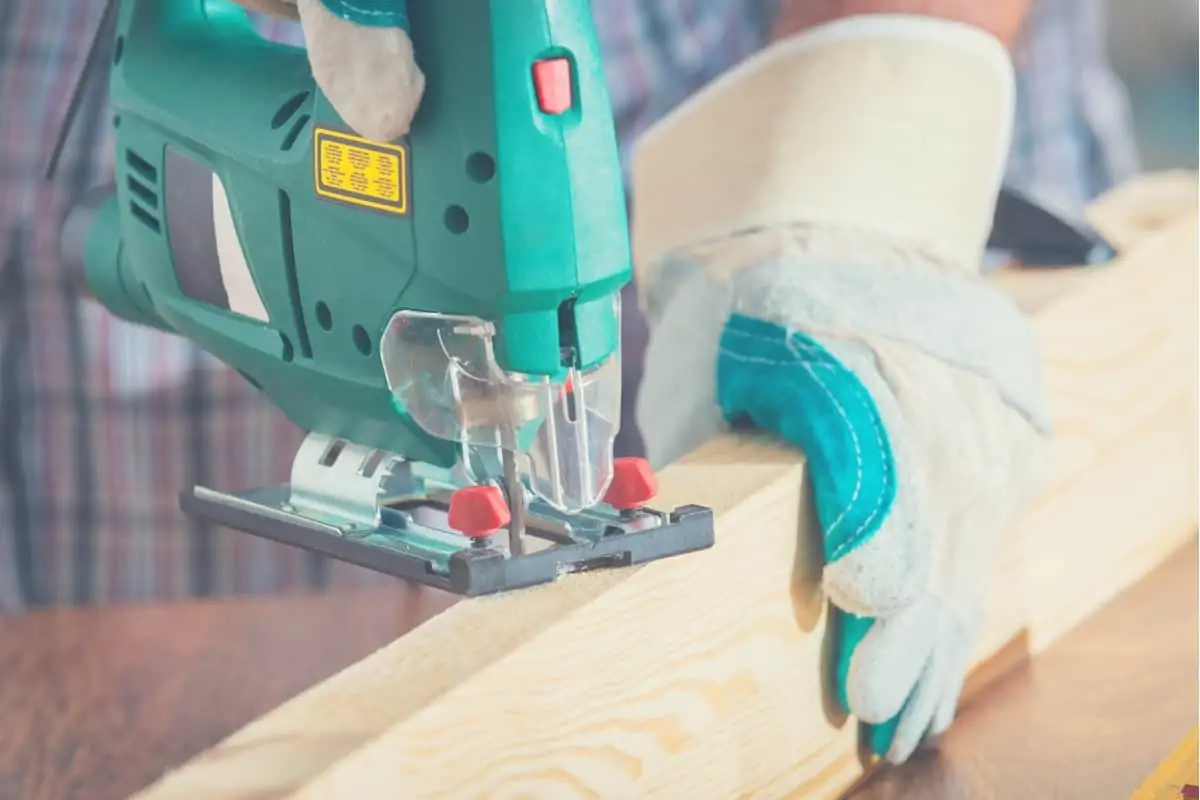

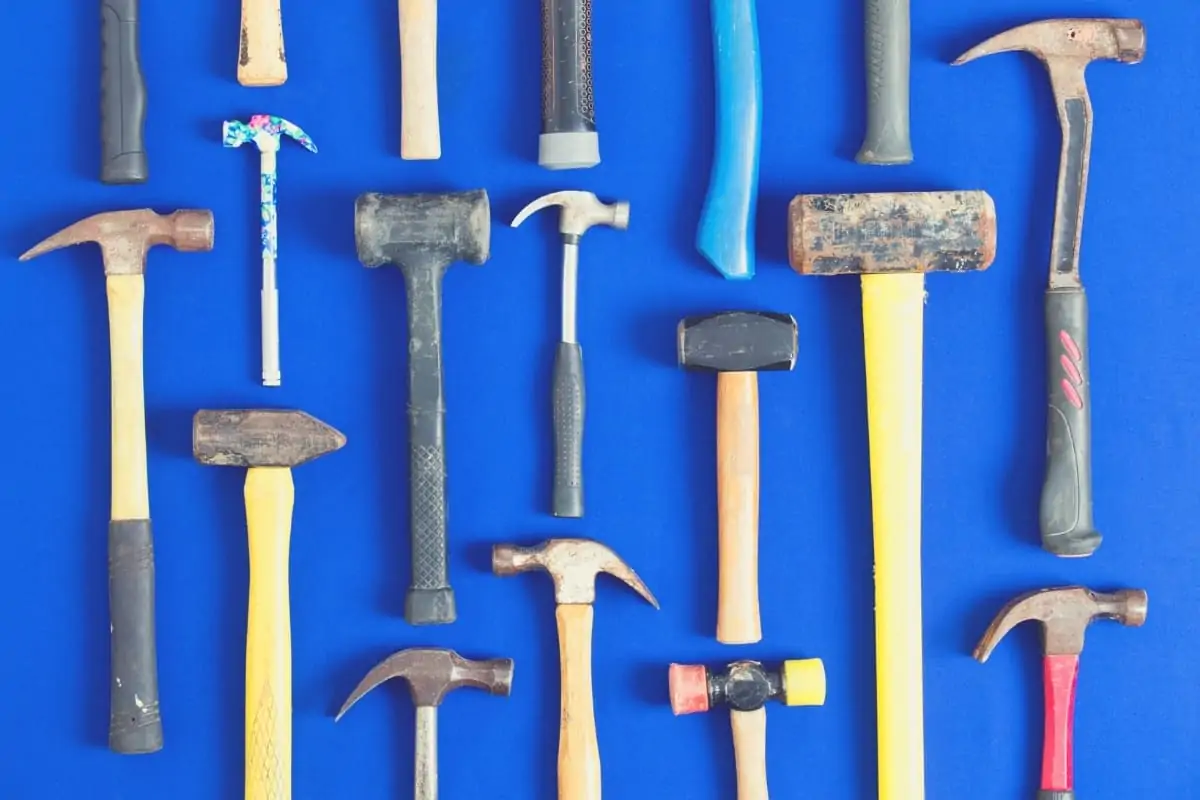
Hi Nathan, In my country 21 degrees nails in plastic strip don’t exist, I have a nailer thats hold those, but I just can buy the 15 degrees wire strips nails, do you have an idea about how to adapt the strips?, Thank you, from Argentina.
Hi Gustavo, unfortunately I wouldn’t be able to suggest any ideas on adapting 15 degree wire strip nails to work with a 21 degree plastic strip nailer. I’d hate to be responsible for a damaged, or worse, unsafe nailer. If it was me I would consider sourcing internationally. I hope you’re project is large enough to consider this as an option. Thanks, Nathan.
Hi Nathan, Just wanted to thank you for your in depth analysis of nail gun angles with the detailed pro’s and con’s. Your engineering background and your passion for woodworking come through. Thanks again! Jason from Oakland CA
Hi Nathan, this is from a professional carpenter and handy man service. I don’t do new construction framing jobs, mostly repairs and replacements. I bought a Bostitch nailer in 2020. I went with a cordless (time saver!) that uses wire-welded coated nails. Probably a close-out model. Later that year my buddy bought the identical Dewalt model (for $100 more) that uses plastic collated nails. They are both SBD companies and are identical except for the nails. His unit uses plastic collated nails. Oh my goodness, what a mess. Plastic everywhere. Clean up is a major factor. Also, ALWAYS use safety glasses when it is plastic! Another note: mine holds 2 clips, his holds way less than 2 clips, so buy an extended magazine (optional) if using plastic. So… you CAN buy full headed nails at the degree used for wire collated nails. Although not from box stores. Go to a professional construction fastener vendor, better price anyways.
p.s. great research, dude.
Yours in frustration, Christopher
Show different angled nails on top of a protractor. No no degrees from what?